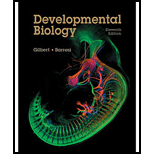
To review:
In the United States, pregnant women are warned not to drink water from lakes that lie near abandoned mines.
Introduction:
The exogenous agents like drugs, chemicals, viruses, and infectious elements that cause birth defects are called teratogens. The development of humans ais divided into two main periods: embryonic period (end of week 8) and fetal period (remaining time in utero). Teratogens generally effect these crucial time periods between week 3 to 8.
Explanation of Solution
Abandoned mines often release water-soluble crude oil components that act as teratogenic molecules. A study revealed that in zebrafish embryo exposed to oil spill components produce larvae with developmental anomalies including reduction in size of head, gill, and thoracic cartilages associated with cranial neural crest migration. Often lakes near abandoned mines can be place of vector-borne diseases producing novel form of virus or bacteria. The mosquito-borne Zika virus can cause a birth defect microcephaly characterized by small brains and heads. These virus directly infect neural progenitor cells of the fetal cortex, resulting in death of cells causing smaller brain and head of newborn.
The pregnant women are warned not to drink water from lakes that lie near abandoned mines because they can contain teratogens causing birth defects in developing fetus.
Want to see more full solutions like this?
Chapter 24 Solutions
Developmental Biology
- Describe two different gene regulation mechanisms involving methylationarrow_forwardWhat is behavioral adaptarrow_forward22. Which of the following mutant proteins is expected to have a dominant negative effect when over- expressed in normal cells? a. mutant PI3-kinase that lacks the SH2 domain but retains the kinase function b. mutant Grb2 protein that cannot bind to RTK c. mutant RTK that lacks the extracellular domain d. mutant PDK that has the PH domain but lost the kinase function e. all of the abovearrow_forward
- Explain how the hormones of the glands listed below travel around the body to target organs and tissues : Pituitary gland Hypothalamus Thyroid Parathyroid Adrenal Pineal Pancreas(islets of langerhans) Gonads (testes and ovaries) Placentaarrow_forwardWhat are the functions of the hormones produced in the glands listed below: Pituitary gland Hypothalamus Thyroid Parathyroid Adrenal Pineal Pancreas(islets of langerhans) Gonads (testes and ovaries) Placentaarrow_forwardDescribe the hormones produced in the glands listed below: Pituitary gland Hypothalamus Thyroid Parathyroid Adrenal Pineal Pancreas(islets of langerhans) Gonads (testes and ovaries) Placentaarrow_forward
 Comprehensive Medical Assisting: Administrative a...NursingISBN:9781305964792Author:Wilburta Q. Lindh, Carol D. Tamparo, Barbara M. Dahl, Julie Morris, Cindy CorreaPublisher:Cengage Learning
Comprehensive Medical Assisting: Administrative a...NursingISBN:9781305964792Author:Wilburta Q. Lindh, Carol D. Tamparo, Barbara M. Dahl, Julie Morris, Cindy CorreaPublisher:Cengage Learning Understanding Nutrition (MindTap Course List)Health & NutritionISBN:9781337392693Author:Eleanor Noss Whitney, Sharon Rady RolfesPublisher:Cengage LearningCase Studies In Health Information ManagementBiologyISBN:9781337676908Author:SCHNERINGPublisher:Cengage
Understanding Nutrition (MindTap Course List)Health & NutritionISBN:9781337392693Author:Eleanor Noss Whitney, Sharon Rady RolfesPublisher:Cengage LearningCase Studies In Health Information ManagementBiologyISBN:9781337676908Author:SCHNERINGPublisher:Cengage- Essentials Health Info Management Principles/Prac...Health & NutritionISBN:9780357191651Author:BowiePublisher:Cengage





